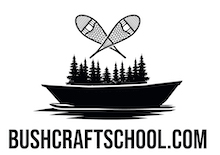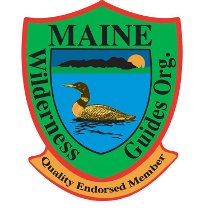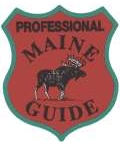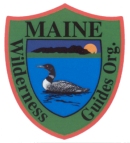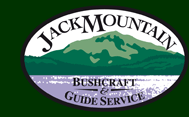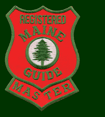I recently rewrote the section of our student handbook that explains how we assess student work in our yearlong and semester programs. That rewrite is below:
Assessment: Logbook and Portfolio
There are no certifications in bushcraft, wilderness survival or primitive skills that are accepted universally. If any school offers a certification, it’s likely a result of their marketing department and probably isn’t transferable. We don’t recognize any. I’ve crossed paths with numerous people who were “certified” in one thing or another, but in the real world were incompetent, incapable of completing some of the most basic tasks. Thus certified doesn’t necessarily mean qualified or competent. Neither does how many courses you’ve attended, regardless of the school or instructor. What you’ve accomplished and the experience you’ve accumulated does. We don’t want to certify people. Instead, we seek provide training and field experience and let what they accomplish speak for itself. The way we do that is through our logbook and portfolio assessment system. It records what a student has accomplished instead of placing them in competition with their peers. Students keep a daily logbook during the program to record what they’ve done. These, along with crafts they’ve made, projects they’ve worked on, photographs they’ve taken, and everything else they’ve done during the program, are assembled into individual student portfolios.
Your portfolio is a factual record what you’ve done. This way, if someone were to ask if you knew how to start a hand drill fire, instead of saying you took a course on how to do it you could volunteer your logbook and state that you’ve done it “X” number of times. If they wanted to know about your skill with a specific craft, you could show it to them, as well as photos or video of you making it. In this era of people being over-certified and under-qualified, this type of assessment system offers a route back to reality.
Portfolio
Your portfolio includes your logbook and nature study journal, as well as other writings, crafts, photographs, plant pressings, journals and anything else you do during the program. By viewing your portfolio anyone should be able to determine exactly what you’ve done and what your qualifications are.
Logbook
Your logbook is a public document that serves as a factual record of what you’ve accomplished which you can use as proof of your experience and accomplishments. The logbook is not a personal journal or diary where you record your deepest, darkest secrets. Nor is it a notebook where you record the how-to information and personal musings that arise when taking a course. These both detract from its usefulness, and would necessitate anyone reading through it to sift through the parts that don’t belong. It can be viewed by anyone wishing to determine your level of skill and training.
In the past we used bound notebooks (the black and white compostion books) as logbooks, but we’ve transitioned to typing them on a computer for the ease of distribution and reproduction. We still use the composition notebooks on trips.
If you have an interest in teaching bushcraft or guiding, a well kept logbook is a great way to begin the marketing process. If you have an interest in being a teaching assistant or instructor with us, keeping an accurate and detailed logbook is a must.
The outline in section three will be the backbone of the skills listed in your logbook. As you learn a skill, you document it in your logbook.
Frequency
Logbooks should be maintained daily during training. The experience of past students is that if the day’s events are not recorded that evening or early the next morning, their memory soon becomes lost. Since our programs are intensive immersion experiences, every day is a busy, full day. So in order to have your logbook document the full scope of your experience, be sure to add to it daily – don’t skip a week and try to recap everything at a later date.
What To Include In Your Logbook
A logbook entry should include the date, location, a summary of the day’s activities, a list of accomplishments and observations, and any reflection on how the accomplishments and activities of the day relate to the course. Similarly, it is useful to devote a page in your logbook to keeping lists of different activities and how many times you’ve successfully completed them. An example of this is friction fire – it is useful to keep a list of how many bow-drill and hand drill coals (separate lists) you have gotten. Also shelters you have built and slept in, etc.
Instructor’s Signature
To verify that the content of your logbook is accurate, an instructor should regularly sign off on it. This can be weekly, bi-weekly, or at the end of a course.
Sample Logbook Entry
Date: 10/17/2003
Location: Croque Brook Campsite, Allagash River, Maine
Summary: Today we poled and paddled from Back Channel campsite on Round Pond downriver to Croque Brook. We left Back Channel at 8 am after a breakfast of oatmeal. We stopped at the spring near the ranger’s cabin on Round Pond to fill up water bottles on the way. While there we identified several plants. We traveled through Round Pond Rips, a challenging section of river at such low water levels. The trip downriver was uneventful except for one of the boats hitting a rock and spinning around – it needed to be lifted off the rock and it’s occupants needed to step out to get it floating again. Once we arrived at Croque Brook we set up camp and had lunch, then poled across the river to get firewood. When we had enough, we brought it back to camp, sawed to length, then split the big pieces. We spent the remainder of the afternoon learning about lining canoes and tying lining bridles onto our boats. I started the cooking fire with a bowdrill, and with a dinner of chicken stew we baked sourdough biscuits in the reflector oven. After the dishes were cleaned, I took a swim and after dark we had a short lesson on celestial navigation.
Accomplishments And Observations:
1. I worked on snubbing (poling downstream), and my downstream ferrying with the pole became much stronger.
2. Got my 23rd bow drill coal to start the dinner fire.
3. Pressed a specimens of Viburnum trilubum and Eupatorium maculatum
4. Saw bull moose with a full rack in the river just downstream from Round Pond
5. Felled, limbed and sectioned several trees with my axe for firewood.
6. Carved feather sticks with my knife
7. Learned to tie a lining bridle onto a canoe and line through rapids
8. Mixed and baked sourdough biscuits in the reflector oven
Reflections: My snubbing vastly improved today, as did my ability to put the canoe exactly where I want it with the pole. I feel confident in shallow class 2 whitewater, and if I encounter water I’m not comfortable poling or paddling, I confident in my ability to line a canoe through it. My axe use has improved greatly on this trip as a result of using it every day. I was much more confident and felt safer using it.

